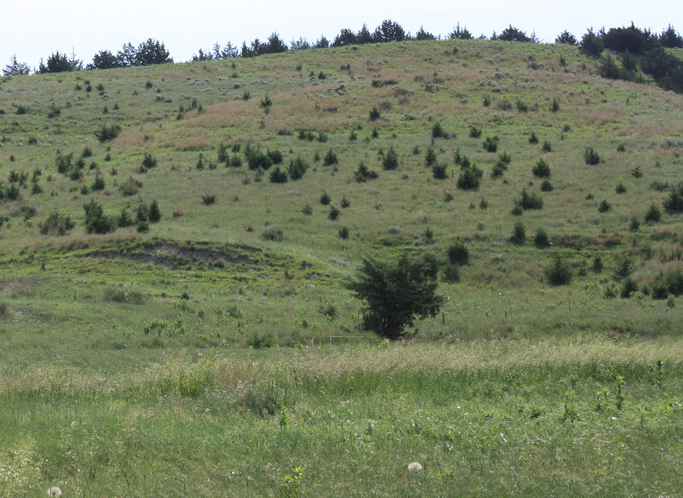The curse of rangeland cedar trees |
| By Mike Rankin, Senior Editor |
|
Photo: University of Nebraska |
 Photo: University of Nebraska Rangeland pastures are difficult enough to keep productive throughout the growing season without the encroachment of woody species. The problem, according to Bethany Johnston, is getting worse. The University of Nebraska Extension educator notes that her state’s challenge rests with the spread of eastern red cedar trees in otherwise productive rangeland. “This encroachment is more than just a change in scenery,” Johnston explains. “Woody plants outcompete grass, displace wildlife, reduce forage production for grazing, enhance wildfire risks, and impact water quality and quantity.” Rainfall, soil type, and range management help to dictate the severity of cedar growth, but once established, the spread of seed by birds will amplify the level of encroachment. Many times, the spread of cedar seeds begins from trees growing in windbreaks, in fence lines, or along bodies of water. “Based on research studies, 95% of new cedar tree seedlings are found within 200 yards of a mature female tree,” Johnston shares. A mature female cedar tree can produce up to 1.5 million seeds per year. Their germination rate approaches 70%. Fortunately, cedar seeds have a relatively short viability. Only 5% are viable at 14 months and just 3% are viable after 28 months. The extension educator explains that a 200-yard radius around a mature female tree is equal to 26 acres of infected grassland. Without a mitigation strategy, the seedlings grow to maturity and begin infecting further reaches of a rangeland pasture. “Each year, cedar seedlings grow about 1 foot per year, so eventually the trees become obvious above the prairie grasses,” Johnston explains. “After several years, once the female trees reach 5-feet tall in 6 to 7 years, they begin producing seeds. At this stage, each new mature tree creates its own 200-yard seed dispersal zone, which accelerates the spread. Over time, the scattered smaller trees appear farther and farther from the original seed source,” she adds. Act early and often Intentional efforts need to be made if cedar encroachment is to be stopped. Johnston offers these recommendations: • Begin monitoring areas around mature cedars, particularly pastures near windbreaks. • Regularly check around mature windbreaks. Most new seedlings should be within 200 yards of the seed-producing trees. Trees as short as 5-feet tall can begin producing seeds. • Act early — before a cedar problem is visible. For two to three years, seedlings often remain hidden below the grass canopy. • Remove unplanted cedar seedlings immediately to prevent further spread. If you see a cedar seedling that wasn’t planted, terminate the plant. Cedars are not rhizomatous, so cutting below the lowest branch prevents resprouting. • Eliminate rogue cedar trees beyond 200 yards before they mature and produce seeds. |
